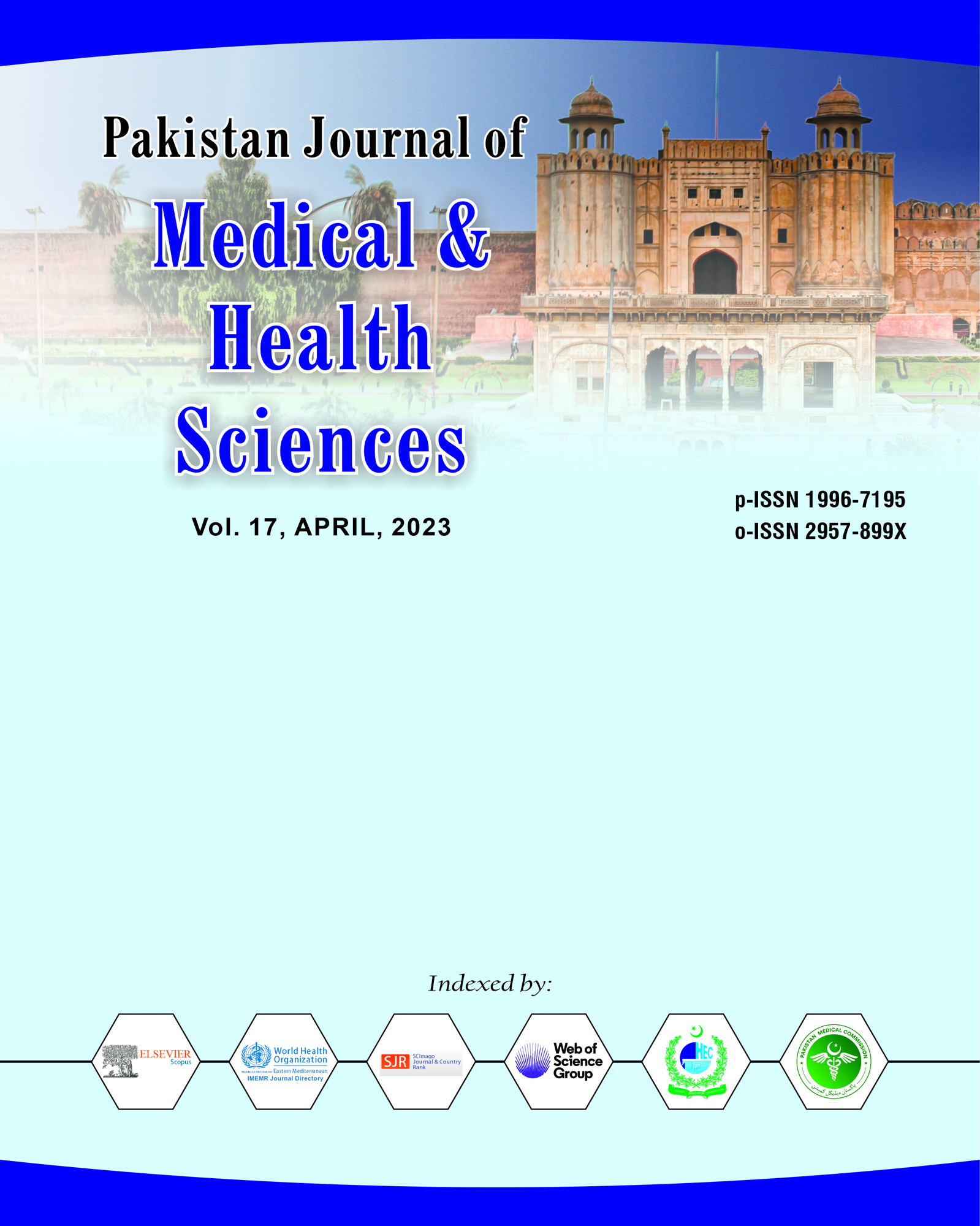Comparative Study on the Impact of Malnutrition and Dietary Variations on Human Growth, Skeletal Development, and Metabolic Function Across Pakistani Population
DOI:
https://doi.org/10.53350/pjmhs2023174724Abstract
Background: Despite rapid socioeconomic transitions, public health in Pakistan has not been able to prevent malnutrition, which remains a major public health challenge in the country. Nutrition transition occurs in urban areas with high caloric but low micronutrient diets and rural areas with persistent undernutrition. The human consequences of these disparities are critical not only to human growth and skeletal development but also to human metabolic function.
Objective: The purpose of this study was to conduct a comparative analysis of malnutrition and dietary variations among Pakistani populations and assess their impact on anthropometric measures, bone mineral density, and metabolic profiles.
Methods: A cross-sectional comparative study was performed of n=100 participants aged 5 to 60 years from tertiary care Hospitals of Pakistan over 12 months. A validated 24-hour recall and food frequency questionnaire were used to assess dietary intake. Anthropometric data were collected using standardized methods while bone mineral density was measured with dual-energy X-ray absorptiometry (DEXA). Glucose, lipid profiles, and bone turnover markers were analyzed from fasting blood samples. T-tests, ANOVA, and multivariate regression were conducted on statistical analyses with a significance level of p < 0.05.
Results: The caloric, protein, calcium, and vitamin D intake of urban participants was greater than rural subjects. However, subjects of urban subjects also had higher fasting glucose, dyslipidemia, and altered insulin levels. On the other hand, rural participants exhibited lower anthropometric indices as well as lower bone mineral density, which corresponded to chronic micronutrient deficiencies.
Conclusion: These are not different burdens; they are the dual burden of malnutrition in Pakistan, and they reinforce the need for tailored public health strategies. Micronutrient deficiencies in rural areas and the metabolic risk in urban populations alike require targeted nutritional interventions.
Keywords: Malnutrition, Dietary Variations, Skeletal Development, Metabolic Function, Pakistan, Urban-Rural Disparities
Downloads
How to Cite
Issue
Section
License
Copyright (c) 2023 Misbah Ishtiaq, Aneela Ahsan, Muhammad Umar, Farhana Jafri, Muhammad Faisal Khan, Mushtaq Ahmad

This work is licensed under a Creative Commons Attribution 4.0 International License.


